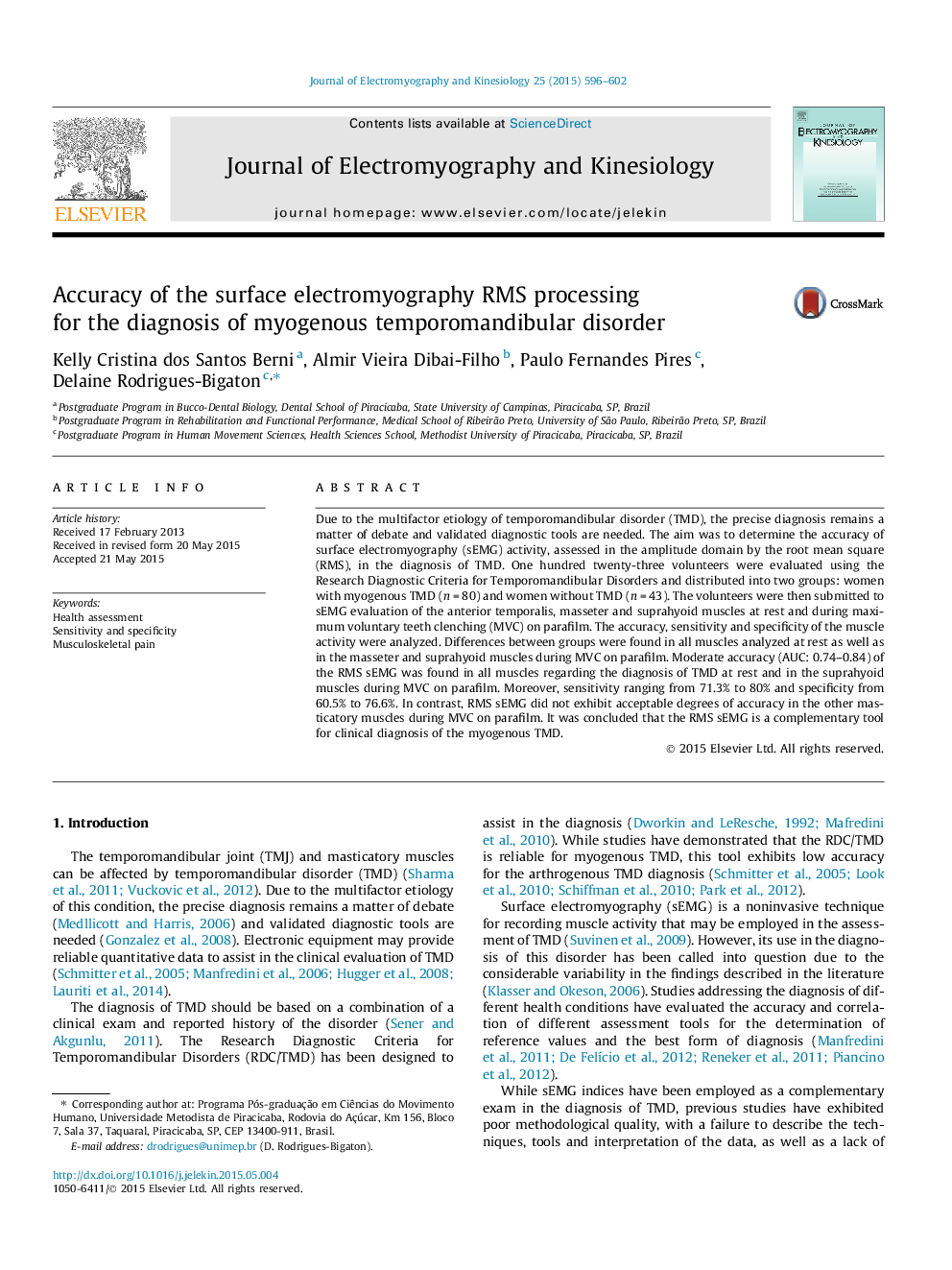| Article ID | Journal | Published Year | Pages | File Type |
|---|---|---|---|---|
| 4064583 | Journal of Electromyography and Kinesiology | 2015 | 7 Pages |
Due to the multifactor etiology of temporomandibular disorder (TMD), the precise diagnosis remains a matter of debate and validated diagnostic tools are needed. The aim was to determine the accuracy of surface electromyography (sEMG) activity, assessed in the amplitude domain by the root mean square (RMS), in the diagnosis of TMD. One hundred twenty-three volunteers were evaluated using the Research Diagnostic Criteria for Temporomandibular Disorders and distributed into two groups: women with myogenous TMD (n = 80) and women without TMD (n = 43). The volunteers were then submitted to sEMG evaluation of the anterior temporalis, masseter and suprahyoid muscles at rest and during maximum voluntary teeth clenching (MVC) on parafilm. The accuracy, sensitivity and specificity of the muscle activity were analyzed. Differences between groups were found in all muscles analyzed at rest as well as in the masseter and suprahyoid muscles during MVC on parafilm. Moderate accuracy (AUC: 0.74–0.84) of the RMS sEMG was found in all muscles regarding the diagnosis of TMD at rest and in the suprahyoid muscles during MVC on parafilm. Moreover, sensitivity ranging from 71.3% to 80% and specificity from 60.5% to 76.6%. In contrast, RMS sEMG did not exhibit acceptable degrees of accuracy in the other masticatory muscles during MVC on parafilm. It was concluded that the RMS sEMG is a complementary tool for clinical diagnosis of the myogenous TMD.
